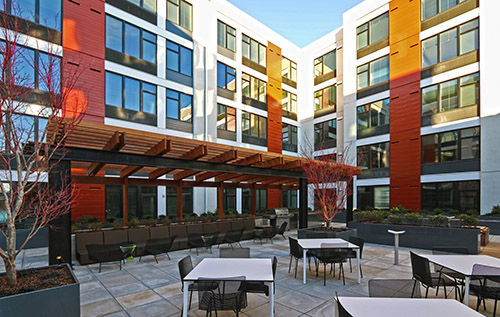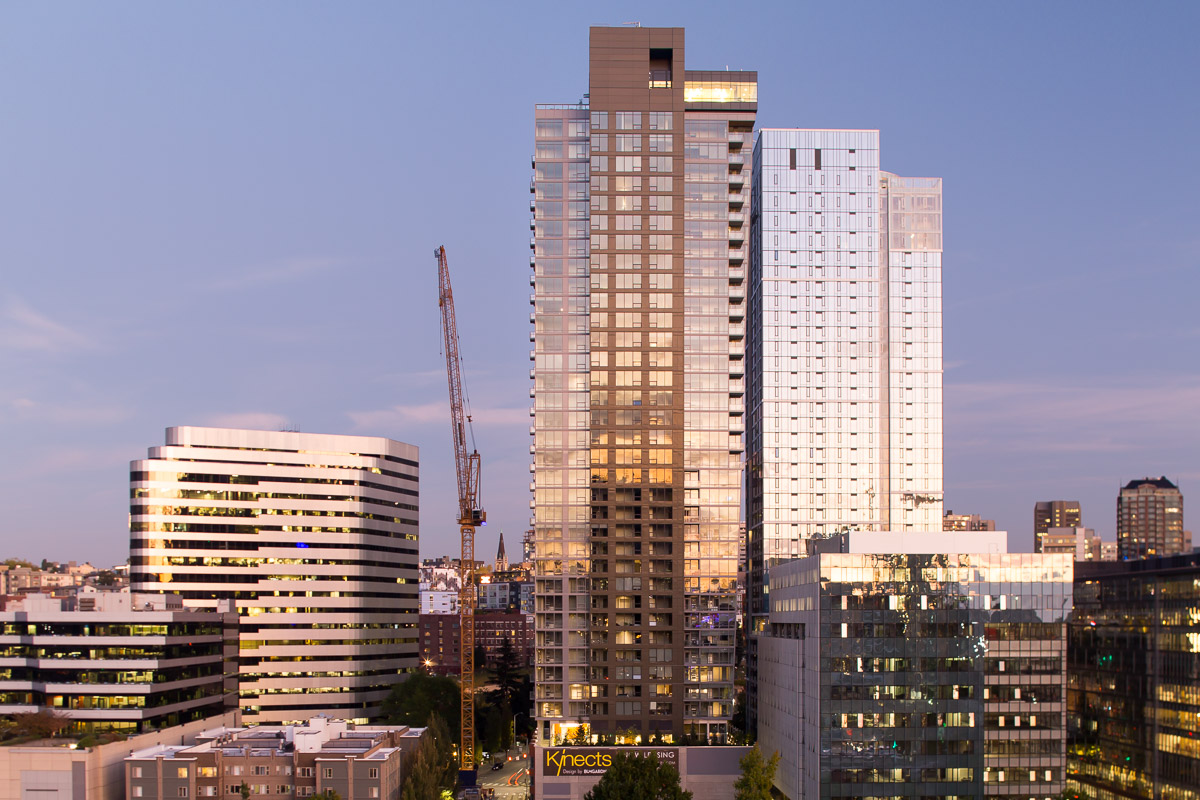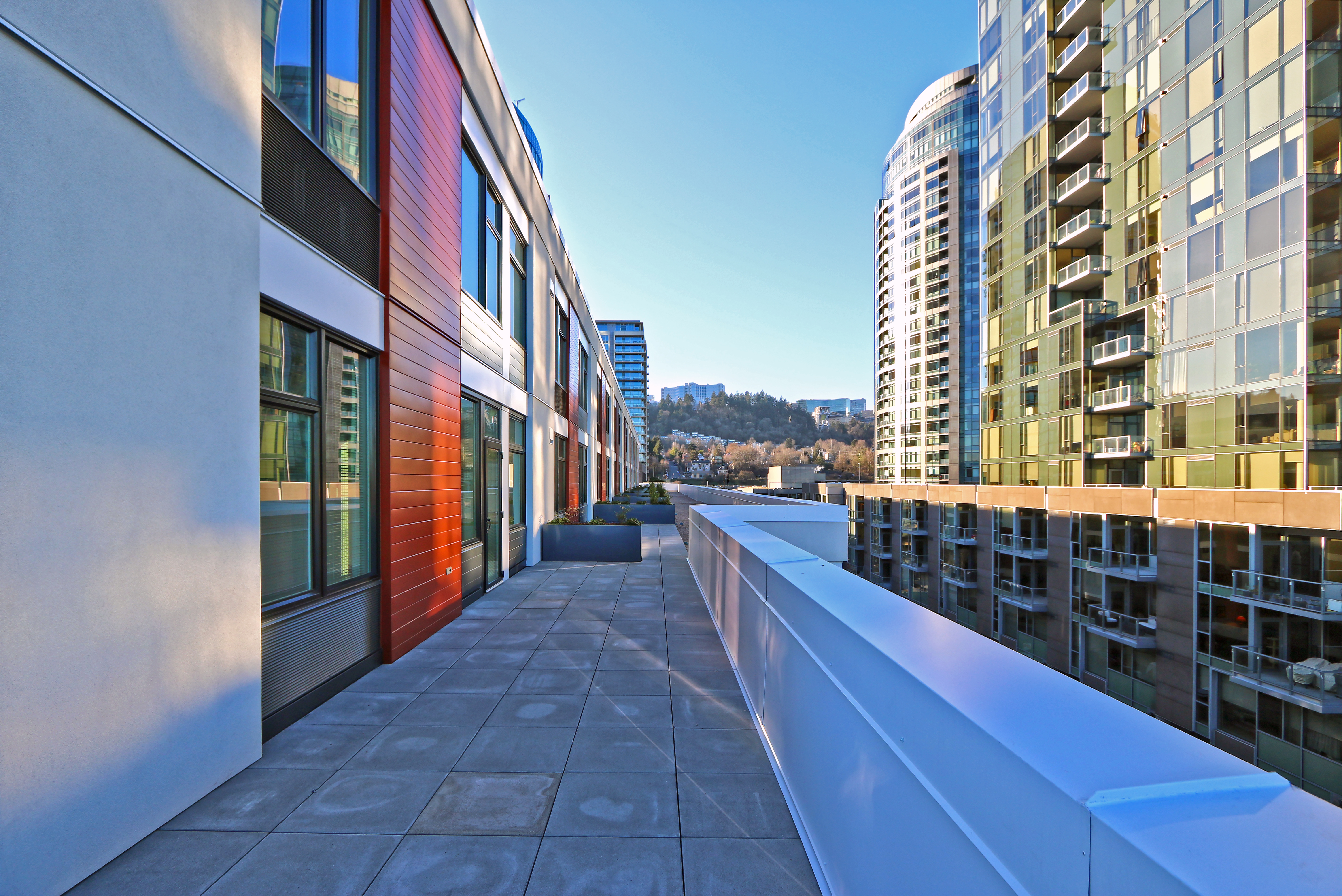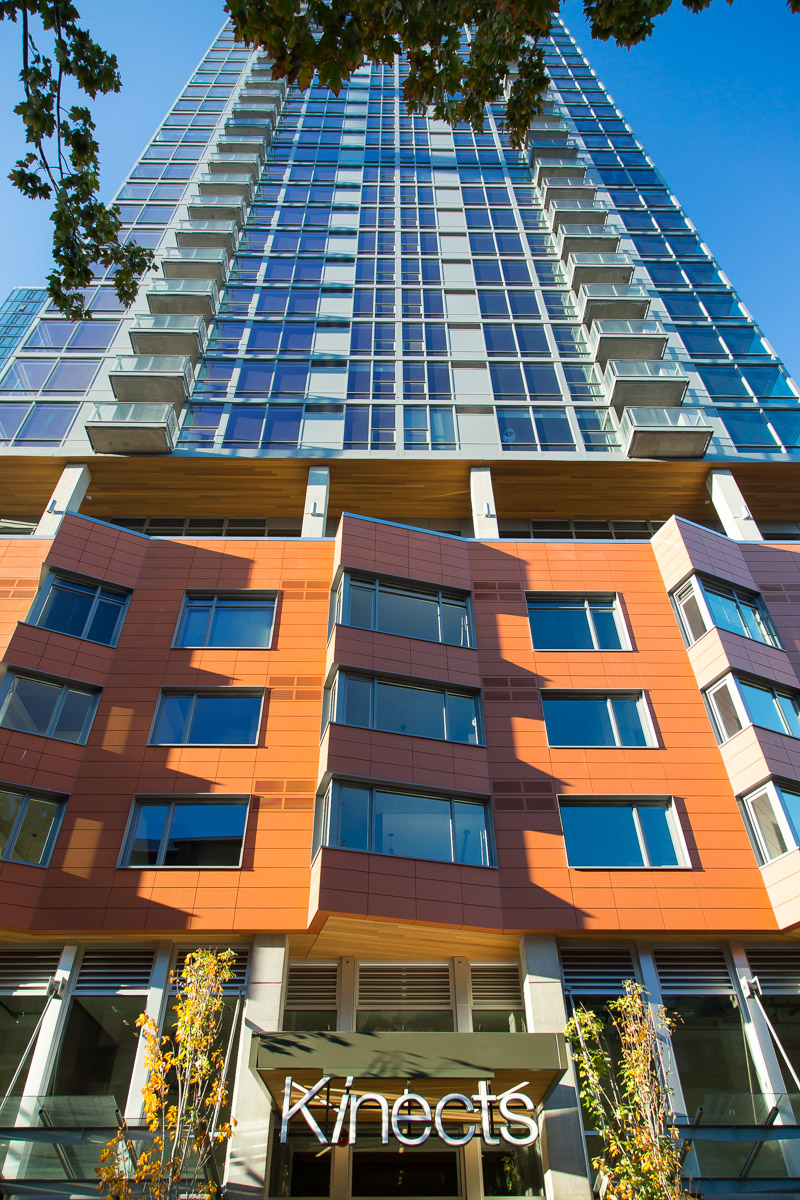There is a saying that goes “A market that is level or de-escalating makes for a very smart estimator, where as an escalating market makes all estimators look stupid”.
The Pacific Northwest has been hit by significant escalation in the past 4-5 years with escalation exceeding 20% over the last 4 years based upon the RLB Construction Cost Report. However we have seen additional escalation exceeding these national indexes. For example, we calculated the costs on 3 similar housing projects: The Addy, 9th & Belmont and N18, and the increases for these projects have averaged nearly 10% per year from The Addy’s GMP in 2013 at the bottom of the market through 9th & Belmont’s GMP in early 2016 to N18 which is currently in preconstruction. Because of this, we have targeted projects that add a line item below our escalation line titled “market volatility” to show the local escalation that exceeds the national indexes.
Our current escalation is different than the typical cost increases which are from commodities and yearly Cost of Living labor adjustments. Today’s escalation is due primarily to the busy construction market. On many of our projects we struggle to get more than 1 or 2 subcontractor bids in each trade. This drives the costs up as the subcontractors know they have less competition and can increase their fees. Additionally, the subcontractor’s backlog is full so they are not chasing as much work. Before we accuse the subs of raising their costs and making exorbitant profits, keep in mind that they are not able to provide the same highly productive tradespeople that they have in the past. The market is so busy they have either broken up their crews to cover more projects or their crews have been recruited by their competitors. This requires subs to bring in less experienced tradespeople. If they have been able to hold on to their crews, they are likely paying more overtime to make up for the reduced productivity or having to give their tradespeople a bump in pay to keep them.
How Do We Solve This Challenge?
One way that Andersen has been mitigating the subcontractor escalation is to bring the subcontractors on earlier in the preconstruction process. This accomplishes many things:
1. Trade Partner (the IPD name for the subcontractor when brought on early) can more easily plan their workload to make sure they have adequate crews and tradespeople available.
2. Trade Partners can establish their backlog for the upcoming year(s) earlier when they will typically set a more competitive fee.
3. Bringing them on as a partner in the project helps create more budget certainty by having them become engaged and responsible not only for the budget but collaborate on the design to help keep the project in budget and avoid scope “escalation”.
4. Escalation can be reduced by allowing the Trade Partner to mitigate escalating commodities by purchasing materials early through agreements or storing early purchased materials in warehouses.
Looking to the future, we still see strong markets in the Northwest, with multi-family housing remaining surprisingly strong and education projects ramping up both in K-12 and higher education plus healthcare increasing with projects on and off campus medical office buildings and micro-hospitals. The larger/mega projects in Seattle and Portland are still going strong with Amazon and Nike projects still under construction, so we are still recommending that owners carry from 5.0% to 7.5% escalation in their planning in 2018.




